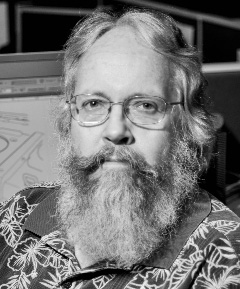Who Says CV Doesn’t Have Great Modern Architecture?

president of the Historical Society
of the Crescenta Valley and loves local history. Reach him at
lawlerdad@yahoo.com.
I think most people would agree that the Crescenta Valley’s architecture is fairly traditional – some might even say boring. Our native architectural style of stone and wood framing, like St. Luke’s Episcopal Church at Rosemont and Foothill, is gorgeous, but certainly not innovative. Save for the Webster Wiley atrium homes of Pinecrest, the vast majority of home styles are that of the post-war stucco box. Perhaps that is part of the area’s charm – our buildings are the “comfort food” of architecture.
Still, two of the most admired pieces of modern architecture in Los Angeles sit largely unknown here in CV – on the same property yet. At the very top of Lowell, just where it turns and becomes Markridge, is a long gated driveway that winds up the mountainside to a property mostly invisible from the street. At the top of this driveway are two homes, one by famed architect Richard Neutra built in 1953, and the second, on the same six-acre property, is a bold and innovative new house (2009) by star modernist architect Michael Maltzan.
The Neutra house is the famous award-winning Serulnic residence. George Serulnic was a violinist for the LA Phil – his wife Dorothy was a poet and secretary for cutting edge architect Richard Neutra.With the Serulnics’ artistic sensibilities, they purchased six acres on the edge of the Angeles National Forest overlooking a rustic unspoiled canyon above Day Street. The site featured amazing views of Los Angeles and the San Fernando Valley. Neutra designed a home worthy of the amazing views with stylish floating lines and entire walls of glass, where the indoor spaces were seamless with the outdoors, a style that is today revered as “Mid-Century Modern.” The Serulnics lived here for four decades until the widowed Dorothy sold the home in 1997.
She chose as buyers two people who could live up to the property’s pedigree, successful LA artists and Art Center professors Lari Pittman and Roy Dowell. They restored the cherished Neutra home, added an amazing artistic cactus garden and pavilion, and filled the home with artwork. But they needed more space for their artwork and (as I was told when I happened to meet them in their driveway one day) they wanted to preserve the Neutra house for display. So in 2009 they challenged prominent architect Michael Maltzan to design a second home on the property that would both contrast and complement the Neutra masterpiece, and work as a design element in the overall composition of the entire property.
Maltzan responded with an extreme seven-sided structure that, instead of looking outward like the Neutra design, looked inward. The design, like a pinwheel when seen from above, sliced the interior spaces into a series of triangles and polygons, with a courtyard in the center. While pulling many design cues from the existing Neutra house, it also plays off the driveway that spirals up to the homes, and the interior spaces take visitors on a “spiral” journey through the surprisingly comfortable home. The design was recognized with three awards from the American Institute of Architects, and was featured in “Architectural Record.”
Today, the secluded property can best be viewed on Google Earth, or on any number of architectural websites, and the newer Maltzan house can be seen from Day Street. Interestingly the property is for sale, for a whopping, but not unreasonable, $7.9 million. I don’t know why Pittman and Dowell are selling their artistic masterpiece of a home. Perhaps the Station Fire that crept very near their home prompted them to rethink the placement of their architectural gems. Perhaps they merely want new challenges in architectural creation. Or – just supposition, but maybe it’s this – while driving along Day Street, I noted that LADWP was doing some construction on the north side just below the Pittman/Dowell property. I’m guessing they were installing water hookups for new homes to be constructed there, immediately below the paradise the two artists have created for themselves. Maybe it was a sign for them that the art they had created on the edge of the mountains was about to be compromised.
